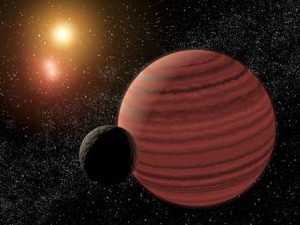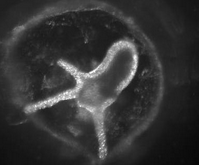Prof. Adam Burgasser (Observational Astrophysics)
Project Description: Prof. Burgasser is looking for 1-2 student researchers to work on the SpeX Prism Library Analysis Toolkit (SPLAT), developing analysis tools to investigate low-resolution near-infrared spectra of cool brown dwarfs. Researchers will develop software in Python to perform various spectroscopic analyses, and use these to search for and characterize rare populations, including metal-poor subdwarfs, young planetary-mass brown dwarfs, and spectral binaries. Researchers will learn to code in Python, spectroscopic analysis techniques, and efficient searching of online catalogs and research portals. By the end of the summer, researchers are expected to have completed a research study of at least one subclass of brown dwarfs, prepare their work for publication in a peer-review journal, and present at the UCSD Summer Research Conference.
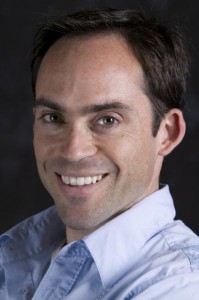 Brief Biography: Prof. Burgasser’s research is observational astrophysics, focusing on the atmospheres and physics properties of the lowest-mass stars, brown dwarfs and extrasolar planets. His tools include optical and near-infrared spectroscopy, photometric and spectroscopic monitoring, high-resolution imaging, and radio interferometry.
Brief Biography: Prof. Burgasser’s research is observational astrophysics, focusing on the atmospheres and physics properties of the lowest-mass stars, brown dwarfs and extrasolar planets. His tools include optical and near-infrared spectroscopy, photometric and spectroscopic monitoring, high-resolution imaging, and radio interferometry.
Webpage: http://coolstarlab.org
Prof. George Fuller (Theoretical Astrophysics)
Project Description: Dr. Fuller is seeking a research student interested in computation to investigate primordial nucleosynthesis and investigating the impact of new neutrino physics.
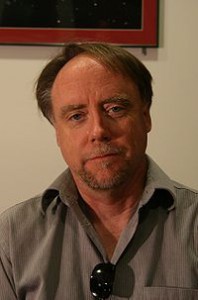 Brief Biography: Prof. Fuller is investigating theoretical issues in primordial nucleosynthesis and cosmology, especially as regards constraints on neutrino physics, the background neutrinos, and neutrino rest mass. Other recent projects include dark matter models with electroweak singlets, the QCD epoch in the early universe, and the instability and collapse physics of supermassive objects.
Brief Biography: Prof. Fuller is investigating theoretical issues in primordial nucleosynthesis and cosmology, especially as regards constraints on neutrino physics, the background neutrinos, and neutrino rest mass. Other recent projects include dark matter models with electroweak singlets, the QCD epoch in the early universe, and the instability and collapse physics of supermassive objects.
Webpage: http://casswww.ucsd.edu/index.php/faculty:Gfuller
 Dark Matter and the Cosmic Microwave Background
Dark Matter and the Cosmic Microwave Background
Prof. Brian Keating (Experimental Astrophysics)
Project Description: Dr. Keating is seeking 1-2 research students for two projects: (1) build a new high-resolution spectrometer and polarimeter for UCSD’s TRITON-Cam radio telescope, which will be used to detect Dark Matter in the Milky Way; and (2) build a new calibration system for the POLARBEAR telescope, aimed at measuring the polarization of the Cosmic Microwave Background. Researchers will learn about cosmology and the physics of dark matter, electronics and radio/microwave spectropolarimetry techniques. By the end of the summer, researchers will use their spectrometer to measure the Milky Way’s rotation curve in H I, prepare a report on their work, and present their research at the UCSD Summer Research Conference. In exceptional cases researchers may travel to work on the POLARBEAR telescope in Chile.
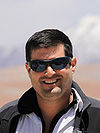 Brief Biography: Prof. Keating is an observational and experimental cosmologist, using novel detectors to measure the polarization and temperature variations of the Cosmic Microwave Background, and cosmological reionization. He is PI of the Simons Array on the POLARBEAR Telescope in the Atacama Desert, and collaborator on the BICEP and CIBER projects.
Brief Biography: Prof. Keating is an observational and experimental cosmologist, using novel detectors to measure the polarization and temperature variations of the Cosmic Microwave Background, and cosmological reionization. He is PI of the Simons Array on the POLARBEAR Telescope in the Atacama Desert, and collaborator on the BICEP and CIBER projects.
Webpage: http://cosmology.ucsd.edu/
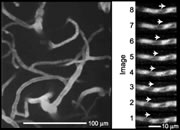 Blood Flow in Cortical Vessels
Blood Flow in Cortical Vessels
Prof. David Kleinfeld (Experimental Neurophysics)
Project Description:
Prof. Kleinfeld’s group is studying the control of blood flow in cortical vessels, from surface arterioles down to single microvessels. Researchers will use MatLab and linear analysis techniques to compare experimental data to models, and in the process learn about neurophysical activity, fluoresence imaging in biophysical systems, and data analysis techniques.
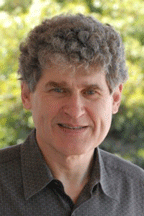 Brief Biography: Prof. Kleinfeld uses experimental techniques to study neuronal activity as it is related to metabolism and cortical blood flow. His group uses in vitro and in vivo techniques and modeling to understanding study neuron interactions at the cellular level.
Brief Biography: Prof. Kleinfeld uses experimental techniques to study neuronal activity as it is related to metabolism and cortical blood flow. His group uses in vitro and in vivo techniques and modeling to understanding study neuron interactions at the cellular level.
Webpage: http://physics.ucsd.edu/neurophysics/microcirculation.html
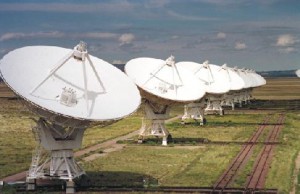 Radio Signals for Hyperactive Stars
Radio Signals for Hyperactive Stars
Dr. Carl Melis (Observational Astrophysics)
Project Description: Dr. Melis is seeking a research student to analyze radio inferometry data of a very low mass star taken with the Very Large Array, to investigate the magnetic field properties and variability of this source. Researchers will learn about activity in cool stars and the radio interferometry technique, be trained in interferometric analysis routines, and interpret the data using the electromagnetic physics principles. By the end of the summer, researchers are expected to have completed a research report on the observations and present at the UCSD Summer Research Conference.
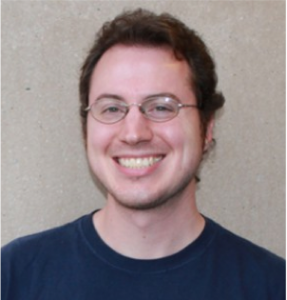 Brief Biography: Dr. Melis is a research scientist at UCSD whose research focuses on the birth, life, death, and re-birth of planetary systems with an emphasis on terrestrial (Earth-like) planets. He also uses radio interferometry to study disks and magnetic activity around cool stars, and for precision astrometry.
Brief Biography: Dr. Melis is a research scientist at UCSD whose research focuses on the birth, life, death, and re-birth of planetary systems with an emphasis on terrestrial (Earth-like) planets. He also uses radio interferometry to study disks and magnetic activity around cool stars, and for precision astrometry.
Webpage: http://cass.ucsd.edu/~cmelis/index.shtml
Prof. Oleg Shpyrko (Experimental Condensed Matter Physics)
Project Description: Prof. Shpyrko is looking for 1-2 students to work on soft condensed matter projects, which include light (laser) scattering and microscopy studies of complex soft solids and fluids; Atomic Force Microscopy studies of surface properties, wetting and capillarity; studies of Langmuir monolayers of nanoparticles and biologically inspired molecules assembled at liquid-air interface; and X-ray scattering from thin films and nanostructures. These projects provide students with a wide range of experience, from instrument design and sample preparation to data collection, analysis and computer simulations
 Brief Biography: Prof. Oleg Shpyrko is a condensed matter experimentalist, with emphasis on developing and using novel X-ray, neutron, optical scattering and microscopy techniques to further our understanding of complex interplay of structure and dynamics of materials at nanoscale. Our group investigate a wide range of materials, including magnetic thin films and devices, metal-insulator transition, antiferromagnets, charge density wave materials, superconductors; we also conduct in-situ studies of ionic diffusion in battery materials, Langmuir-Blodgett films, polymers, self-assembly of nano particles, nanoscale capillarity, and colloids and foams.
Brief Biography: Prof. Oleg Shpyrko is a condensed matter experimentalist, with emphasis on developing and using novel X-ray, neutron, optical scattering and microscopy techniques to further our understanding of complex interplay of structure and dynamics of materials at nanoscale. Our group investigate a wide range of materials, including magnetic thin films and devices, metal-insulator transition, antiferromagnets, charge density wave materials, superconductors; we also conduct in-situ studies of ionic diffusion in battery materials, Langmuir-Blodgett films, polymers, self-assembly of nano particles, nanoscale capillarity, and colloids and foams.
Webpage: http://oleg.ucsd.edu/
Prof. Eva-Maria Schoetz Collins (Experimental Biophysics)
Project Description: The Collins lab is interested in the role of the mechanical properties of the environment on stem cell differentiation and behavior. Research fellows will learn how to perform quantitative measurements of the mechanical properties of different tissues and test whether stem cells differentiate into certain types of cells based on the mechanical properties of the environment. Tools used include tissue rheology, microscopy, fabrication of silicone substrates, image analysis in Matlab, and molecular biology methods.
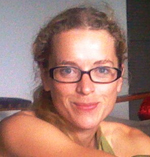 Brief Biography: Dr. Collins’s group investigates the role of physical principles for living systems, focusing on three major areas: biomechanics, asexual reproduction, and behavior and memory. They use techniques such as micro- and macrorheology, in vivo imaging, and force traction microscopy, and combine them with molecular biology methods to investigate how structure and function influence developmental processes, regeneration, and asexual reproduction.
Brief Biography: Dr. Collins’s group investigates the role of physical principles for living systems, focusing on three major areas: biomechanics, asexual reproduction, and behavior and memory. They use techniques such as micro- and macrorheology, in vivo imaging, and force traction microscopy, and combine them with molecular biology methods to investigate how structure and function influence developmental processes, regeneration, and asexual reproduction.
Webpage: http://schoetzlab.ucsd.edu/


